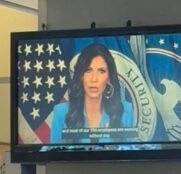Why Are Native American Women Still Being Denied Access to Plan B?
LatestLast fall, Indian Health Service, the federal agency charged with administering healthcare on tribal lands, announced that it would finally make Plan B available over the counter.
Plan B has been available without a prescription since 2006, and available for anyone of any age to buy since March of this year. But that wasn’t the case for tribal people, who could get Plan B free of charge but were still being required to get a prescription for the drug. And getting a prescription, in many places, meant going to an emergency room or urgent care clinic and waiting, sometimes for a very long time. Even people who wanted to buy Plan B at a commercial pharmacy sometimes didn’t have that choice, as some tribal lands and reservations are extremely geographically remote (in parts of Alaska, for example, getting medical supplies can mean taking a boat, ferry or a small plane to a larger town.)
After years of pressure from Native American women’s health activists, IHS promised they would finally change their practices. They provided “verbal directive” to all their facilities requiring that Plan B be made available over the counter. But a new study from the Native American Women’s Health Education Resource Center (NAWHERC) has found that in some places it’s still impossible for Native women to get Plan B, either because their healthcare facility doesn’t carry it, or because the facility refuses to give it to women under 18.
I contacted Charon Asetoyer, the CEO of NAWHERC. “It’s over a year later and here we are,” she said, sounding tired and fed up. “Indian Health Services is still out of compliance.” While there’s been some progress, she said, some places still don’t provide emergency contraception at all, and some only provide it with an age restriction. “Which means there are a lot of young women who aren’t able to access it with autonomy.”
-

-

-

-

-

-

-

-

-

-

-

-

-

-

-

-

-

-

-

-

-

-

-

-

-

-

-

-

-

-

-

-

-

-

-

-

-

-

-

-








































